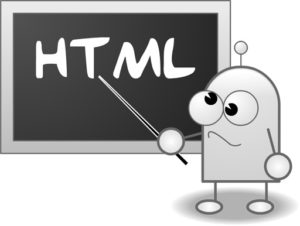The WebAIM Million report, an accessibility analysis of the top 1,000,000 home pages, has been recently updated. Here’s a summary of the update from WebAIM. Sadly, per the report data, the state of web access hasn’t improved much, and has actually worsened overall.
The number of errors increased 2.1% between February 2019 and February 2020.
Below are key points, notes, a call to action, and related tweets.

Key Data Points
- Detectable WCAG failure rate rose from 97.8% to 98.1%.
- The most common errors:
- Low contrast text
- Missing alternative text for images
- Empty links
- Missing form input labels
- Empty buttons
- Missing document language
- Home pages with ARIA present averaged 60% more errors than those without.
- 56% of the 3.4 million form inputs identified were unlabeled (either via <label>, aria-label, or aria-labelledby).
- Only 128,054 (6.8%) of the tables had valid data table markup.
- Website homepages using Vue.js had a whopping 76.2 errors per page.
- 10.8% of home pages had a “skip” link present. However, 11.1% of these links were broken.
Notes
- This study was done using an automated tool which is capable of detecting only a portion of actual accessibility issues/errors. Actual accessibility errors is certainly much higher. (Even after considering that there may be some false positives from automated testing.)
- When we should be simplifying content, home page complexity increased 10.4% in 12 months, from an average of 782 elements per page to 864.
- I wrote about the first report and related issues last year — About the HTML Epidemic, WebAIM “Million” Report, and Teach Access (March 2019).
Call for Action
Developers need to do better with accessibility, and using semantic HTML. The poor results of this report are just not acceptable; it’s poor craftsmanship and poor quality of work. Devs can start improving by:
- Implementing an accessibility linter (such as Axe by Deque).
- Using an HTML validation tool.
- Learning more about digital accessibility.
Tweets
Results of a significant update to the WebAIM Million analysis of the home pages for the top 1 million sites are available at https://t.co/iP1P0zyA55 A summary with highlights/lowlights is available at https://t.co/xSy4rX9XEq
— WebAIM (@webaim) April 1, 2020
– Detectable WCAG failure rate rose from 97.8% to 98.1% in one year.
– Average errors per page = 61.
– Pages with ARIA present averaged 60% more errors.
– 1/3 of images missing alt text.
– Over 1/2 of inputs unlabeled.LOTS more data at https://t.co/iP1P0zyA55
— WebAIM (@webaim) April 1, 2020
https://twitter.com/aardrian/status/1245723560318025728
With the update to the @webaim's Millions report showing website accessibility getting demonstrably worse, I find myself once again wondering why @____lighthouse's #a11y score does not factor into search ranking scoring the way other metrics do. https://t.co/DVQreqax9g
— Eric Bailey (@ericwbailey) April 2, 2020


